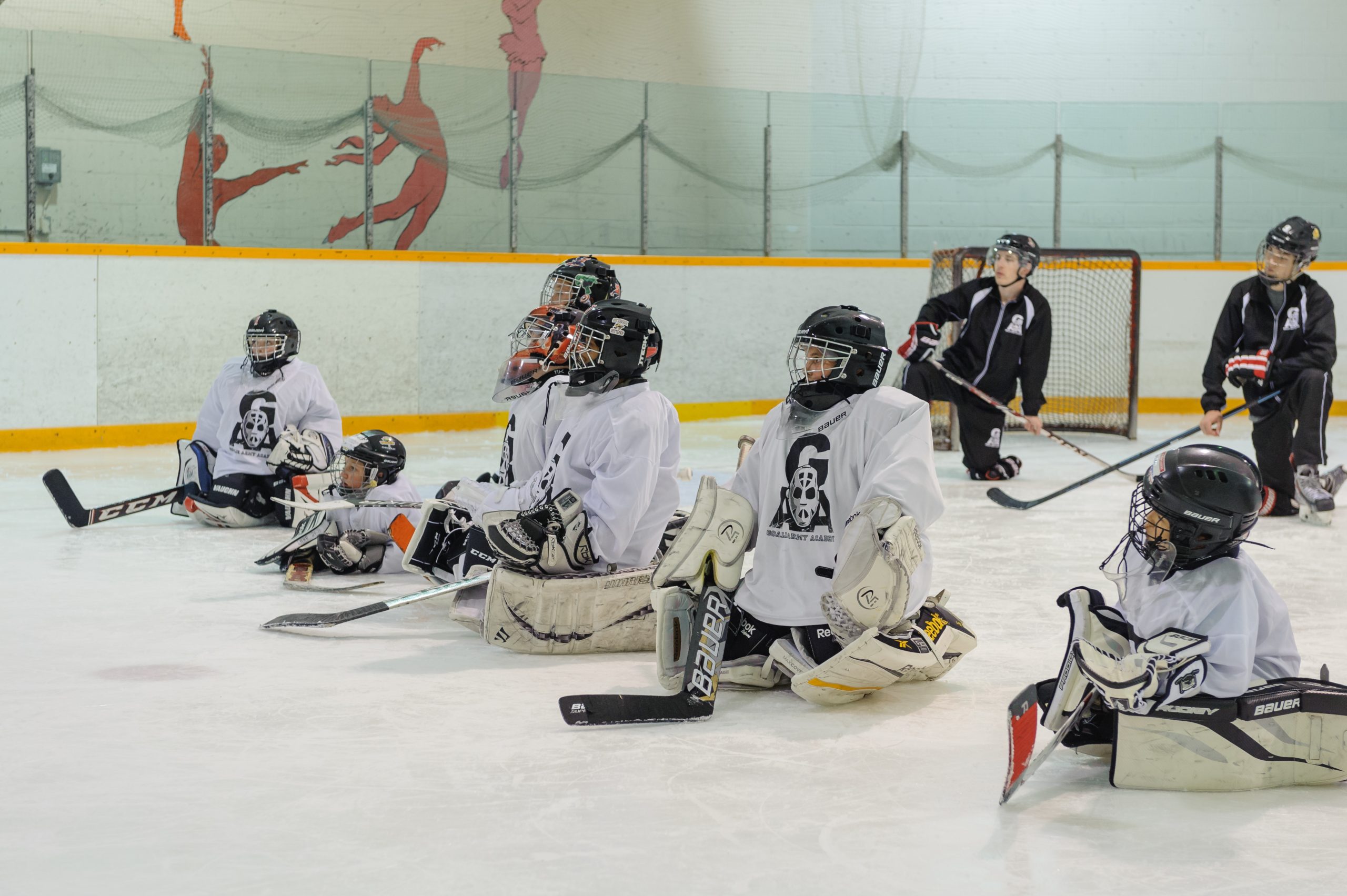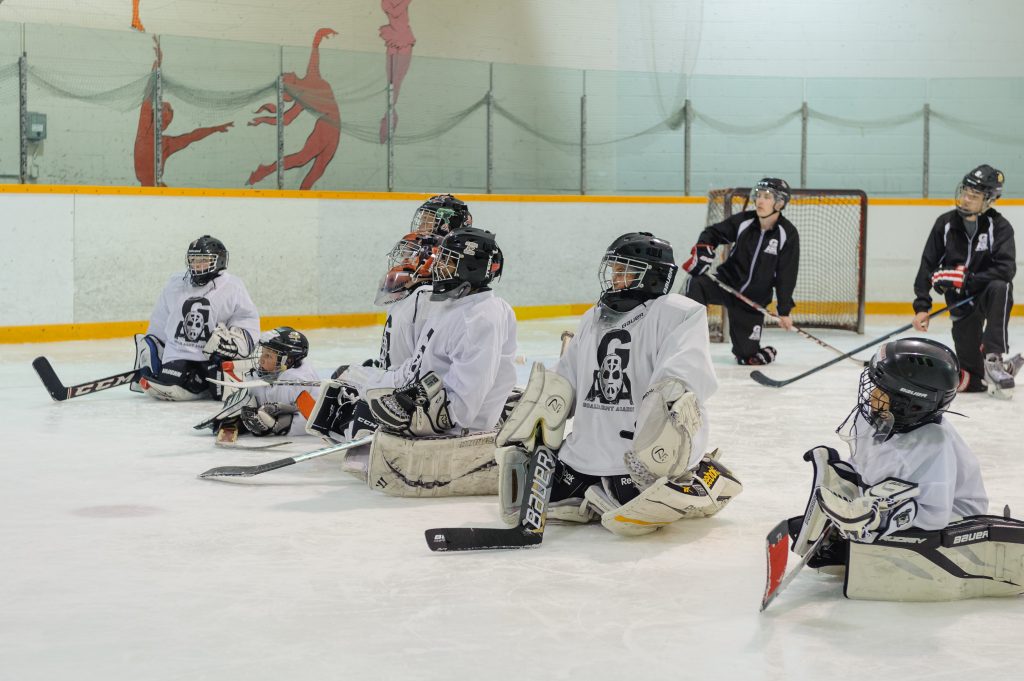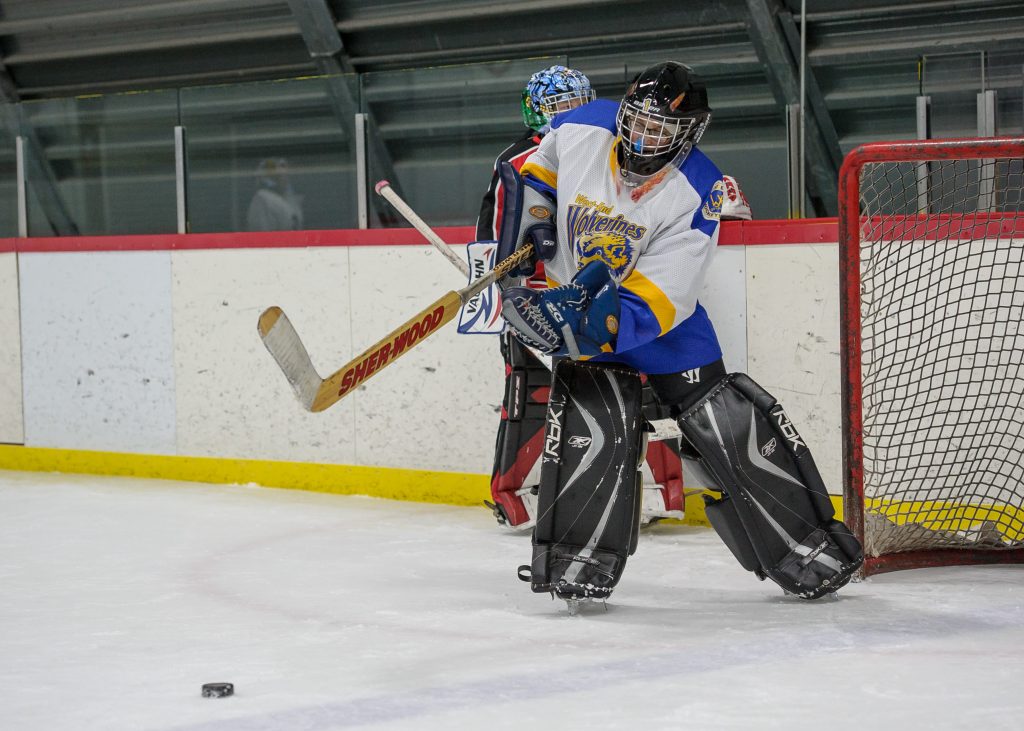
6 Goalie Training Tips for Meeting Tryout Objectives
During tryouts, you can stand out like a sore thumb, or be noticed for all of the right reasons. Here are some goalie training tips for helping you throughout the off-season in order to ensure that you’re not passed over during the pre-season evaluation process.
Develop a Plan
 Great! Your parents signed you up for a bunch of goalie training sessions, and a week-long goalie camp throughout the off-season. But how will you know if you’ve made real progress throughout the off-season to ensure that you’re truly prepared for tryouts?
Great! Your parents signed you up for a bunch of goalie training sessions, and a week-long goalie camp throughout the off-season. But how will you know if you’ve made real progress throughout the off-season to ensure that you’re truly prepared for tryouts?
Your first step for the off-season should be to ensure that you’ve evaluated last season’s performance, determined what went well, what didn’t, and what you’d like the upcoming hockey season to look like. The objective for this process is to become more self-aware of your goals for the upcoming season, and develop a plan to get you there.
An off-season goalie training plan should be your blueprint for success. If you were building a home, you wouldn’t wing it without a blueprint. So without a plan for the off-season, how would you know if you’re on track to meet your tryout objectives?
Staying Active
Whether you’re okay with playing at the same level as you did last season, or you’re looking to bring your game up a level, you must stay active throughout the off-season.
There’s no shortage of studies which educate parents on the cons of early sport specialization, and how they actually harm aspiring athletes in the long term. Therefore, it’s never been more important for athletes to mix it up during their off-ice training, or try playing other sports throughout the off-season.
That being said, how old you are and what level of hockey you play (or want to play) will likely determine whether you’ll be participating in any other sports during the off-season, or simply dedicating your off-ice regimen to the gym and technical training.
For some, staying active means being on the ice two to three times per week, with other sport commitments, and some off-ice training. To others, it may mean working on mobility throughout the off-season. Obviously not everyone’s goals for next season are going to be the same. Just understand that there’s nothing ordinary about becoming extraordinary. So don’t expect greatness from yourself at tryouts if you’ve sat on the couch playing video games all summer.
Off-Ice Training
One of the most important aspects for any athlete during the off-season is to increase mobility. As explained in the following video, mobility is a combination of flexibility and strength.
There are plenty of exercises which goaltenders can do throughout the off-season which do not require weights or an expensive gym membership. For some additional tips in this area, subscribe to our YouTube channel. We’ll be releasing off-ice training videos regularly throughout the off-season to help our students.
Ball Work
Many goaltenders work with a reaction ball, tennis ball, or a lacrosse ball prior to a game which helps them warm up. What many goaltenders do not realize is why they do it.
Working with a ball isn’t about warming up your hands, but your eyes. As a goalie, these are the most important muscles that you should be working on year-round. Doing so will help you to track the puck through traffic, rebounds, and various other scenarios.
Many hockey players have commitments to themselves to become better shooters throughout the off-season such as shooting 100 pucks a day. Goalies can improve their game substantially in their own way by committing to throwing a ball against a wall a couple of hundred times a day.
 Playing the Puck
Playing the Puck
Every coach loves a goalie who’s great at stopping pucks AND capable of playing the puck quickly, accurately, and with lots of confidence.
Therefore, like the ball work section above, develop a plan for yourself which includes some, or all of the following: commitment to shooting (wrist shots) 100 pucks one day, commitment to shooting (backhands) 100 pucks one day, commitment to accurate passing 100 pucks one day, commitment to stickhandling with the puck using the whole blade of the stick in order to get used to having the puck on your stick for a period of time on another day. These should be done with your glove and blocker on in order to build accurate muscle memory.
If you have access to ice during the off-season, try this exercise which combines skating and puck handling:
Technical Goalie Training
The off-season should be used for rest, mending injuries, off-ice training, and of course some technical goalie training.
Attending goalie training sessions about once per week will keep you focused on your goals and enable you to see how all of your off-ice training is helping your on-ice game. In addition, it helps you to work on technical gaps in your game and to become more efficient and effective in your role.
Parents of many young goalies may register their child into a week-long goalie camp because they’re great substitutes for daycare. However, it is recommended that goalies attend regular progressive development goalie training throughout the off-season rather than a week-long crash course right before tryouts. By attending regular goalie training sessions, athletes become more self-aware of their physical abilities as they progress, while lowering their risk of injury early in the season through remaining active throughout the off-season.
With the exception of pre-season conditioning, technical goalie training shouldn’t be about becoming faster and stronger, but building muscle memory through facing game situations while receiving plenty of hands-on coaching.


Leave a Reply